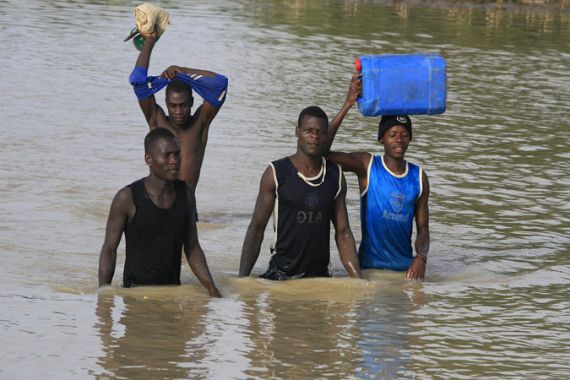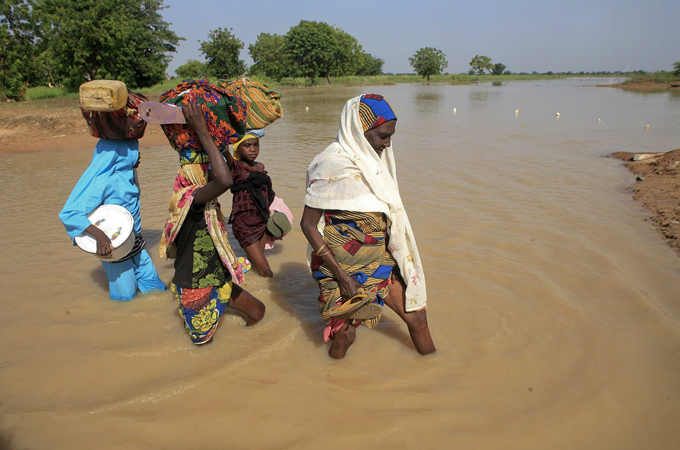The death toll in Nigeria continues to rise
Torrential rains cause a dam to overflow, triggering widespread flooding

 |
| Flooding is not uncommon in Nigeria and last year was particularly severe, affecteding 500,000 people [EPA] |
Flooding in the Nigerian city of Ibadan has claimed the lives of 98 people so far, and more victims are still being discovered.
Southern parts of Nigeria have seen torrential rains this year. In Ibadan, 120km north of Lagos, yet another thunderstorm hit over the weekend and the excessive water caused a dam to overflow. This triggered a torrent of water, which smashed through buildings, bridges and anything else in its path.
Keep reading
list of 4 itemsAfter the Hurricane
World’s coral reefs face global bleaching crisis
Why is Germany maintaining economic ties with China?
Thousands have found themselves homeless and camps have been set up to provide emergency shelter for those in need. Acres of farmland have also been submerged.
Although flooding is fairly common in Nigeria, it unusual for floods to hit in August, which is normally one of the drier months in Ibadan. August lies sandwiched between the rainy seasons that affect the area.
The rains in the equatorial region are set off by the sun’s heating, but of course the position of the sun depends on what time of year it is. The sun moves north for the northern hemisphere’s summer, and south for the northern hemisphere’s winter. As it moves, so do the rains, following the path of the sun north, then south again.
The parts of Africa that are along the equator will therefore see a double rainy season, once as the thunderstorms move north and a second time as they move south again.
In Ibadan, the rains are heavy between April and July, then again between September and October. These are usually the months when the thunderstorms often cause flooding. The drainage in the city is poor, as rubbish and general debris often clogs the drains. Combined with the overcrowding in the slums, the torrential storms can often prove fatal.
Last year the flooding affected half a million people in the country, and extensive flooding was seen in many parts of central Africa.
This year the flooding has not been as extreme as last year, and the waters are slowly receding. The clear-up operation is still underway. Bridges and homes need to be rebuilt, but time is ticking on and it’s not long before the second rainy season arrives, with the risk of yet more flooding.